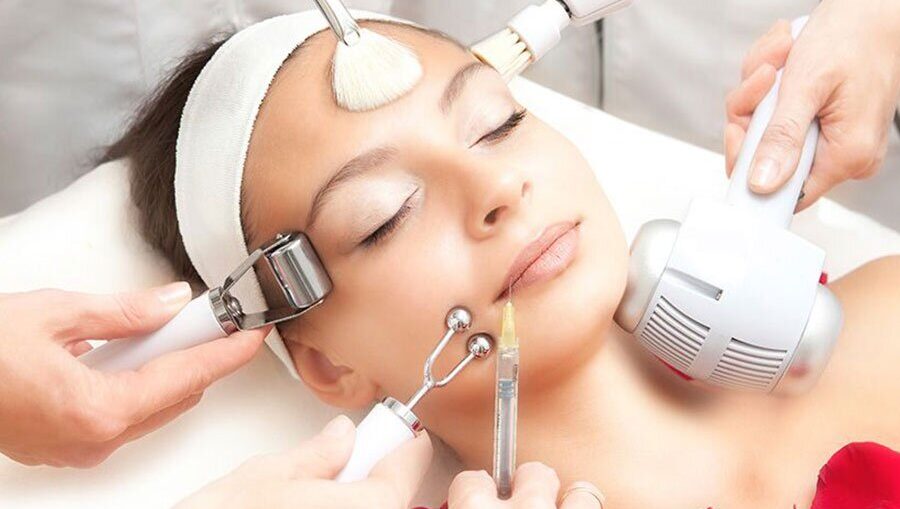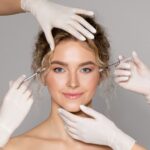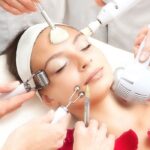FIRST HALF What were we expecting of technology in 2022? Well, after the dominance of internet shopping over the prior two years, more of the same, with bells on. All bets were on livestreaming, already a dominant trend in China, booming in the west. Has it happened? Not yet. Granted, we have seen more investment in the channel – both Amazon and Marks & Spencer have been making forays into the world of livestreaming – but live video shopping remained firmly in its infancy in western markets. Could this be set to change in 2023? Certainly TikTok’s rumored entry into the space could herald a more widespread reach.
But beware the over-commercialization of social media; Meta reported its first ever decline in daily users in February and its plan to win audiences back with relentless reels only served to exacerbate the problem. A report published by Pew Research revealed that just 32 percent of US teens aged 13 to 17 years use facebook, considerably down on 2014’s 71 percent. Why? Well, the platform has singlehandedly managed to turn most people off social media with its irritating algorithm and unremitting sponsored and suggested posts. As TechCrunch put it, facebook has ‘the energy of a spam email’. In short, the likes of Instagram et al have become too much sell and not enough social and users have started to see through the corporate veil.
SECOND HALF If they’re not on traditional social media platforms, where have all the teens gone? Enter gaming and the metaverse. More than 80 percent of millennials and Gen Z are playing games, says L’Oréal-owned Maybelline and the beauty world has sat up and taken notice. Mascaras are now promoted via dedicated games, fashion weeks take place in virtual reality and even celebrity faces are no longer splashed across the pages of glossy magazines but have become avatars on Roblox.
And perhaps the widespread distaste for social media’s corporate hijack has hit home because, in the second half of the year, brands have quickly switched tack from pure promotion to using the tech to highlight their social agendas. Unilever, for example, is exploring the possibilities of fundraising for worthy causes via the emerging Web 3.0 technologies, we’ve also seen both Clinique and Givenchy take to the metaverse to promote diversity.
WHAT’S NEXT? Is it any wonder that, as the reality got more and more bleak throughout 2022 with war, extreme weather and rising inflation, the appeal of a digital world where precisely none of that is happening. has grown exponentially?
The metaverse is the shiny, new thing of 2022 but how will it evolve once the gloss has worn off and can beauty learn the lessons of social channels and keep it just the right side of corporate? Meta’s recent set of results and subsequent share dip suggest its popularity may be more fleeting than the current level of investment suggests; at the same time, several trademark applications have been filed over the course of the year, indicating that there’s more to come in 2023: CVS is planning pharmacy and health clinics, Rihanna’s Fenty Beauty has indicated that it is set to get involved, and Walmart is even planning its own-brand Crypto and NFTs. Watch this space.
Medical aesthetic products refer to a category of products used in the field of medical aesthetics, which combines medical practices with cosmetic procedures to improve the appearance of individuals. These products are typically used under the supervision of trained medical professionals such as dermatologists, plastic surgeons, or specialized nurses. They are distinct from over-the-counter cosmetics in that they often contain higher concentrations of active ingredients or require medical expertise for their application.
Examples of medical aesthetic products include:
-
Dermal Fillers: Injectable substances used to restore volume, fill wrinkles, and enhance facial contours. These may include hyaluronic acid fillers like Juvederm or collagen-stimulating fillers like Sculptra.
-
Botulinum Toxin (Botox): Injectable neurotoxins used to temporarily paralyze facial muscles, reducing the appearance of wrinkles and fine lines caused by facial expressions.
-
Chemical Peels: Solutions containing chemical exfoliants like glycolic acid, salicylic acid, or trichloroacetic acid, used to improve skin texture, treat acne scars, and reduce hyperpigmentation.
-
Laser and Light Devices: Equipment used for various skin treatments, including hair removal, skin resurfacing, tattoo removal, and treatment of vascular and pigmented lesions.
-
Prescription Skincare Products: Formulations containing active ingredients such as retinoids (e.g., tretinoin), hydroquinone, or prescription-strength antioxidants, designed to address specific dermatological concerns under medical supervision.
-
Microneedling Devices: Devices that create tiny punctures in the skin to stimulate collagen production and improve skin texture and elasticity.
-
Cosmeceuticals: High-quality skincare products that bridge the gap between cosmetics and pharmaceuticals, often containing biologically active ingredients with proven efficacy.






Leave a Reply
You must be logged in to post a comment.